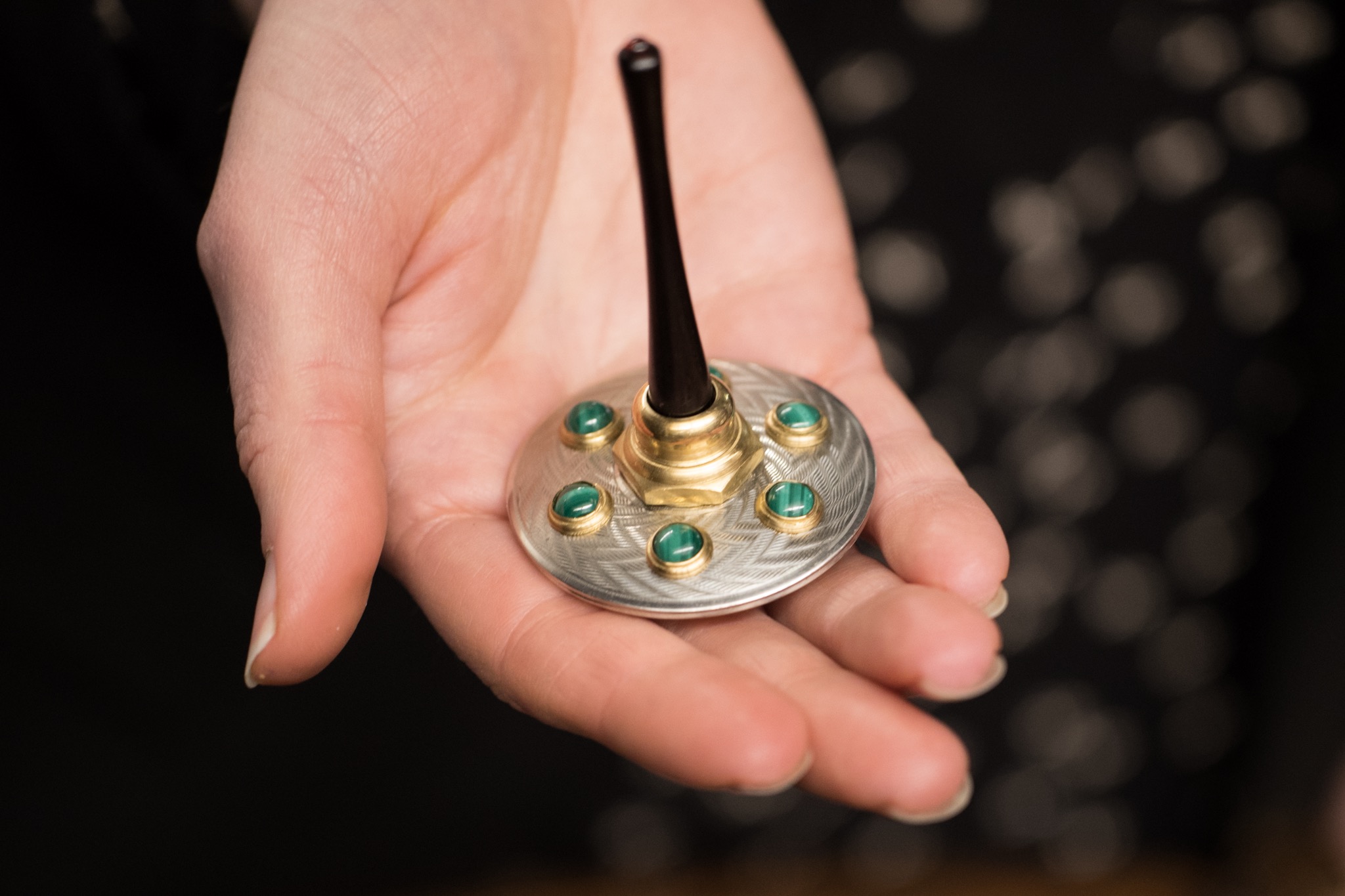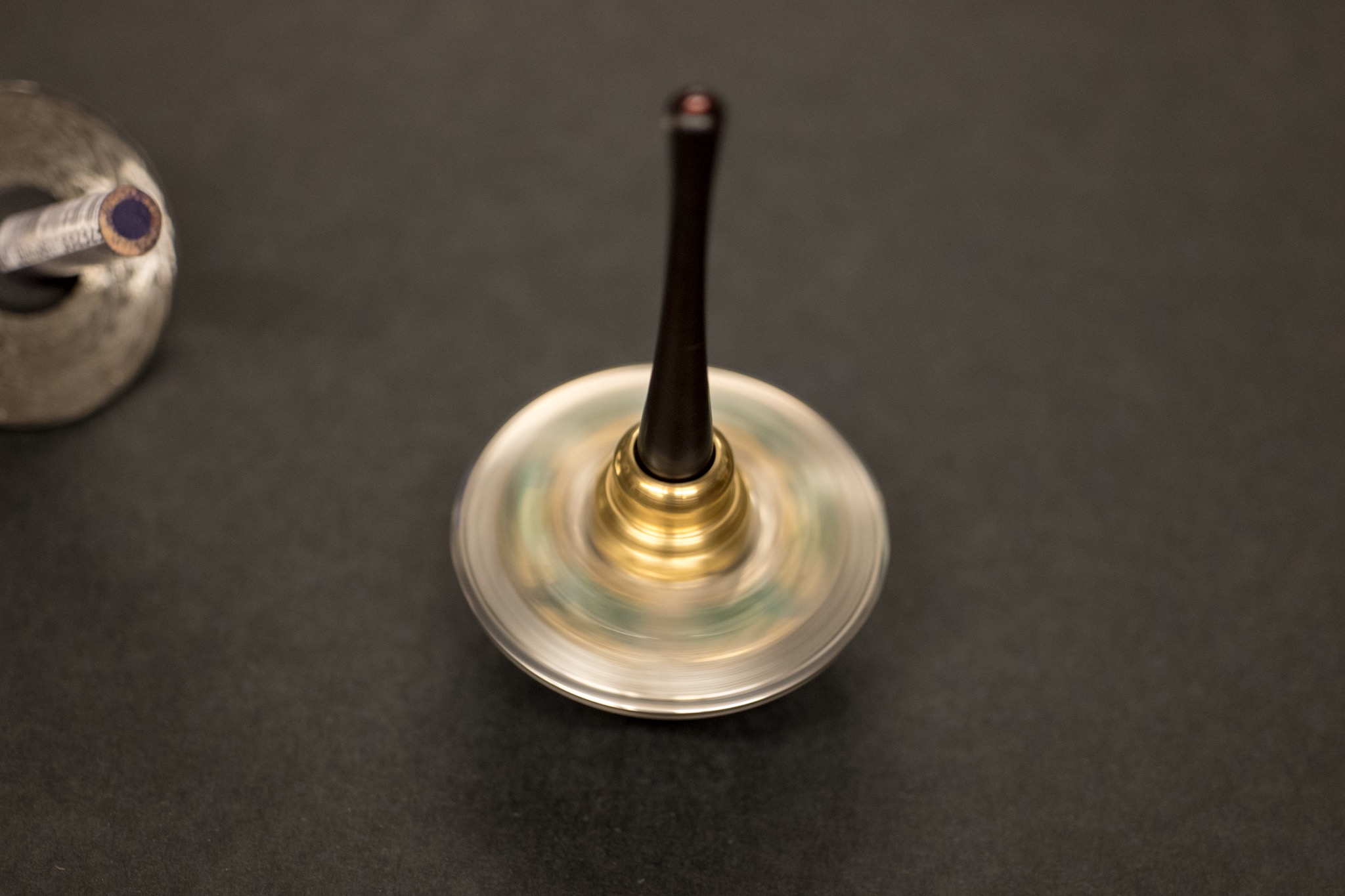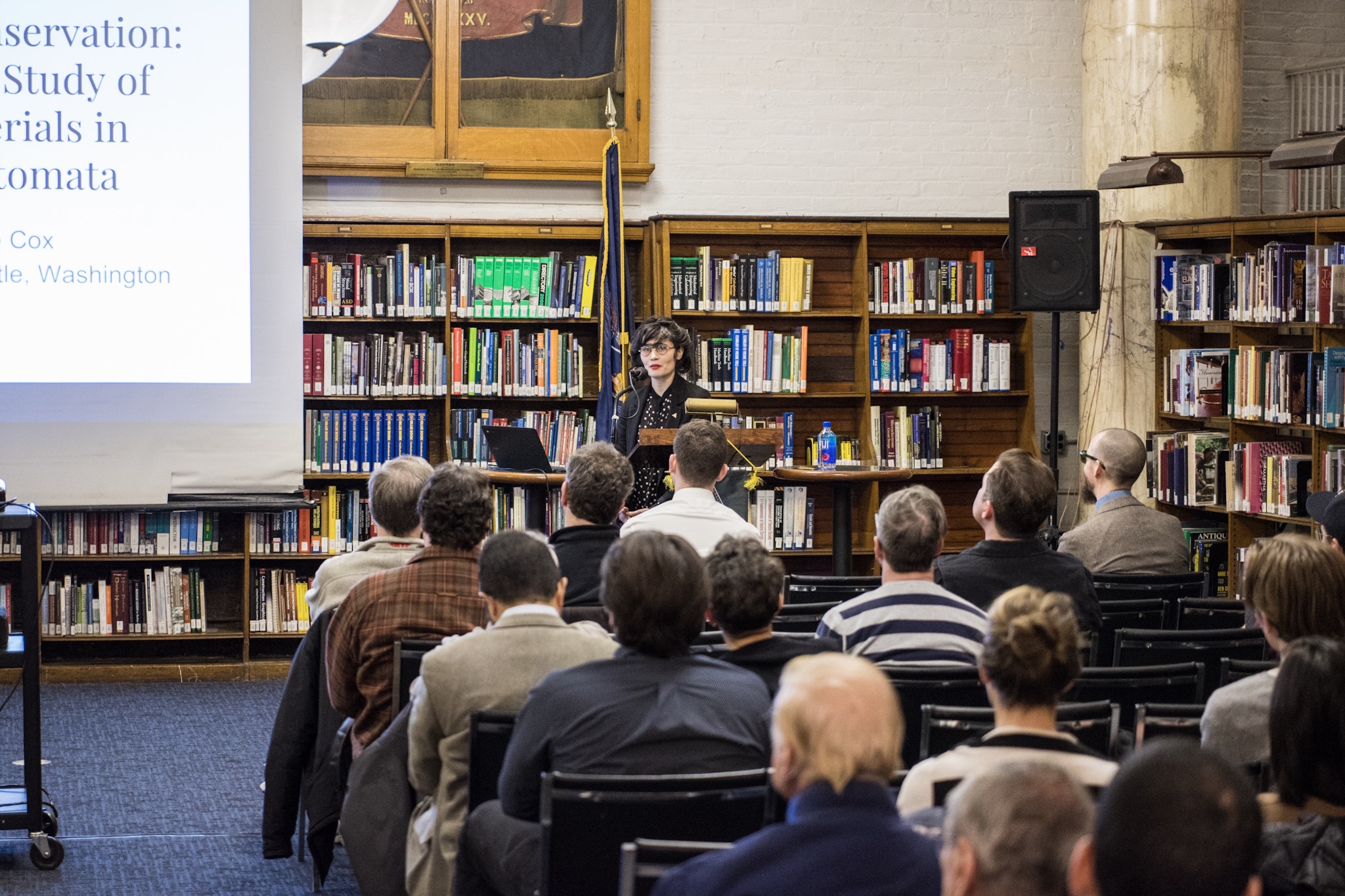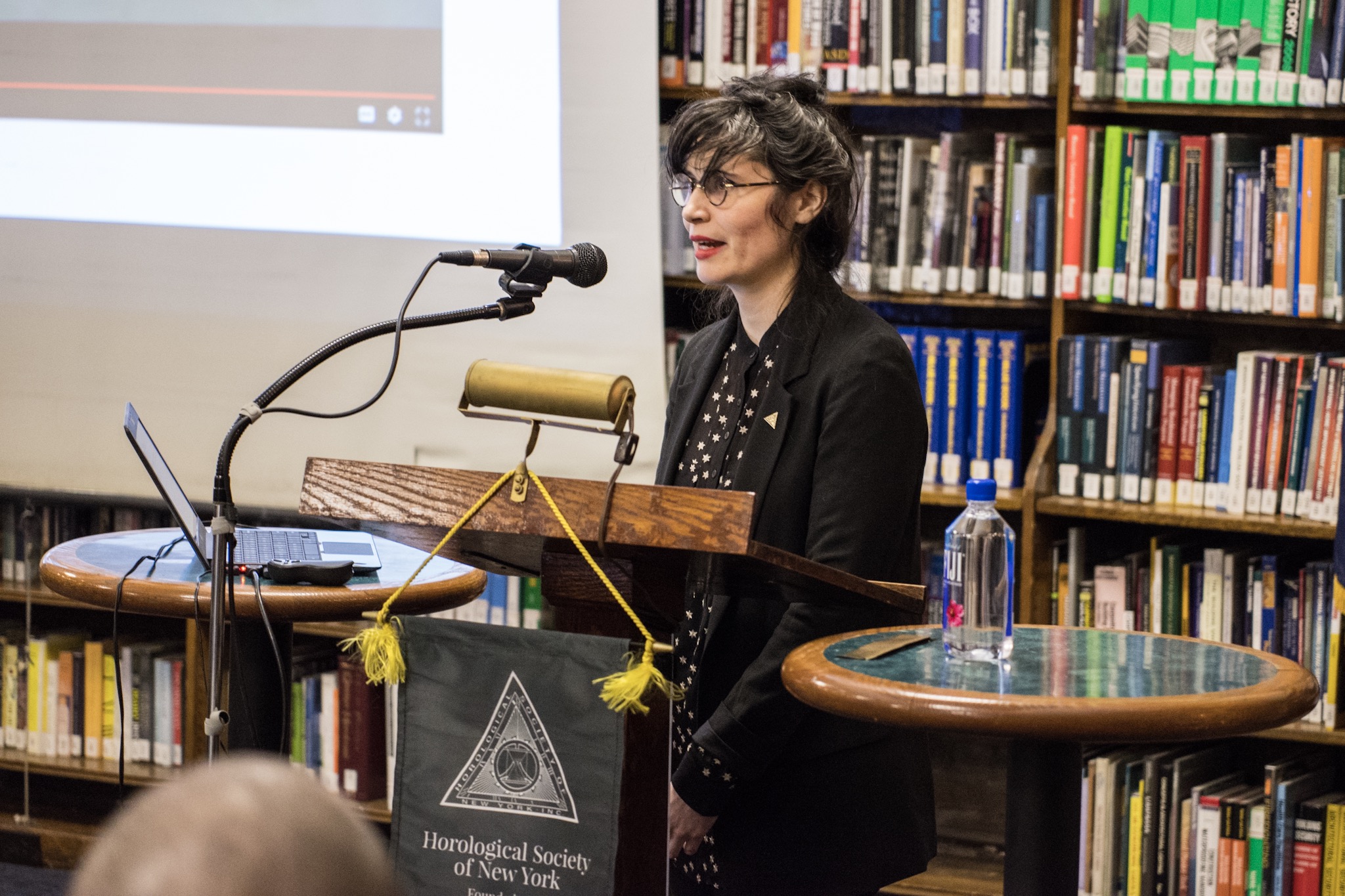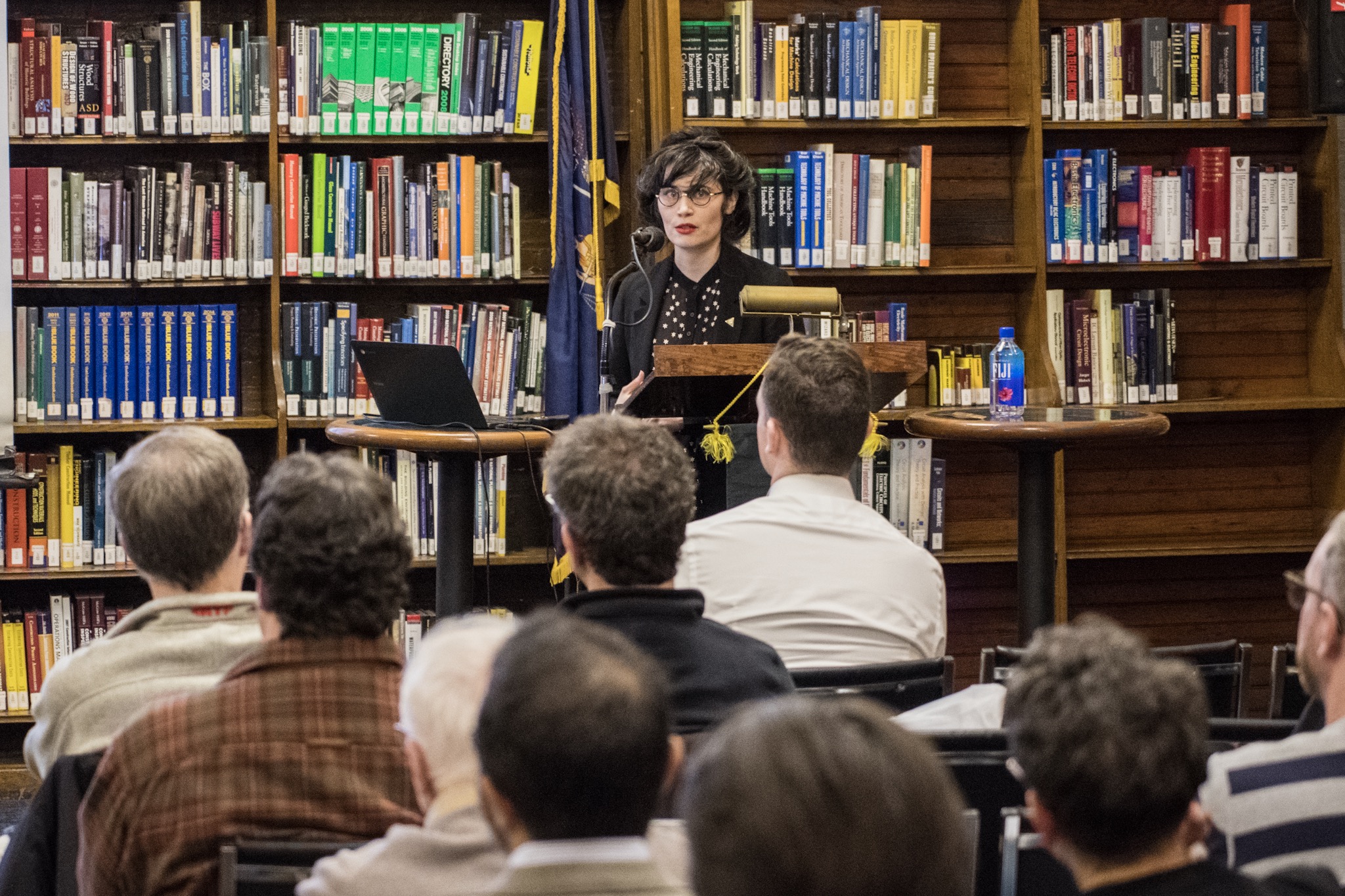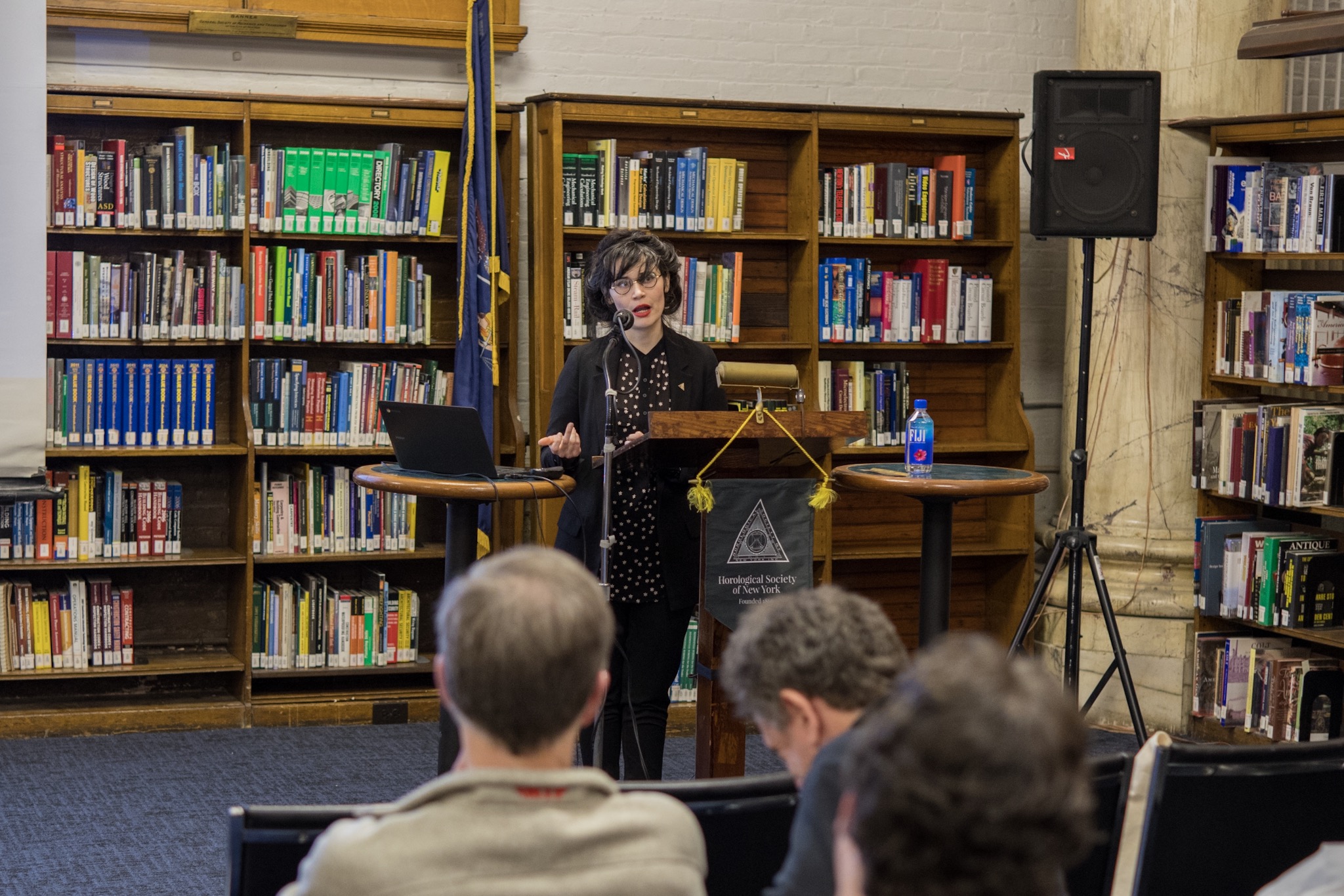Meeting Recap: Horological Conservation - A Preliminary Study of Bellows Materials in Smoking Automata
Video recordings of meetings are available to HSNY members.
Brittany Nicole Cox, Antiquarian Horologist, Seattle, Washington
March 5, 2018
The great George Daniels said, “Mechanical watches are historical, intellectual, technical, aesthetic, useful, and amusing.” While many of us can agree with the first five points, the last one might be a bit befuddling. But automata combine all of these features in a way that still remains fresh and exciting. At the March 5, 2018, lecture of the Horological Society of New York, Antiquarian Horologist Brittany Nicole Cox, of Memoria Technica in Seattle, gave a lecture on a specific type of automata: smoking automata.
Before she delved into these fascinating figures, Cox described the intricacies of automata and the importance of horological conservation. More than just telling time, automata serve a function, and Cox’s main concern is preserving that function along with the historical integrity of the piece she is working on—no matter how complicated that task might be. Clocks with automata figured and singing bird boxes (some actual taxidermy birds with mechanical innards) are some of the horological figures Cox works on.
Cox’s lecture on smoking automata powered by bellows was presented as a way to promote conservation research into materials. These intricate and complex machines often pose a particular set of problems for the conservator. Damage through performance and natural degradation, the use of mixed materials, even the use of the bellows themselves, can all contribute to an automaton’s degradation over time. The cigarette smoking automata were made in the Marais District of Paris between 1848 and and 1914. In addition to being made of materials like textiles, leather, paper, wood, and clockwork innards, these automata also smoked real cigarettes. Cox did her study on an automaton made in the workshop of Gustav Vichy. The automaton wears a red coat, white trousers, and leather boots—all which needed to be removed in order to expose the bellows beneath.
When operated, the clockwork mechanism pumps the bellows in time with the motions of the figure. The head moves from left to right, the eyes blink, and the mouth is open to draw cigarette smoke into it. Upon exhalation, the arm is lowered, and the mouth is opened, exhaling the smoke. The monocle is raised to the right eye and the figure blinks through it. A tube inside the automaton’s hand, connecting it to the chest, draws the smoke in, and another tube draws the smoke back to the mouth. Historicall, components of the bellows system were made from alum-tawed skin and vulcanized rubber, which can become brittle and prone to breakage. In order to work, however, bellows must be flexible, strong, and airtight. This poses a unique problem to the restorer. To construct their replacement, Cox elected to use Tyvek, a modern material that is chemically stable, durable, flexible, durable, strong, and airtight. Cox undertook three trials, exposing the Tyvek bellows to smoke and tensile testing. To repair the damage to the head, Cox used Japanese tissue and wheat paste.
HSNY thanks Brittany Nicole Cox for her fascinating lecture!
Submitted by Christa Chance, Recording Secretary, HSNY
